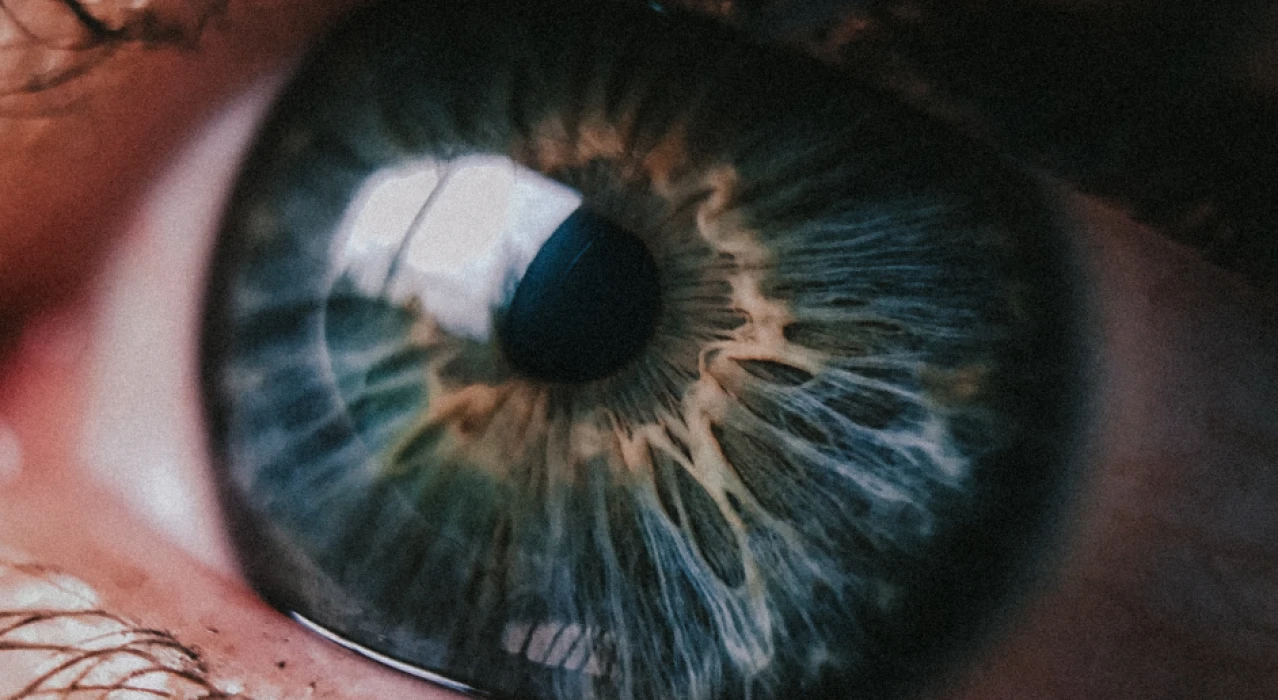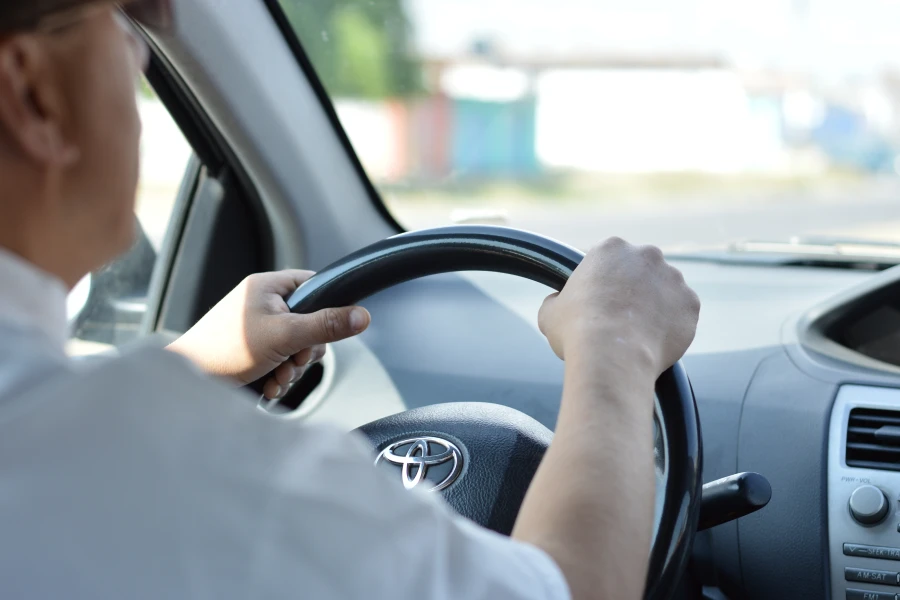Vision and perception
- Áine Keher, Occupational Therapist
- 8 minute read
- Last updated: September 2023
Vision is perhaps the sense that we rely on the most. A stroke can affect your vision and visual processing skills, making it harder to live independently and do everyday tasks. With time and therapy, your vision and visual perception (your brain's ability to make sense of what the eyes see) can improve, as can your ability to live with the visual changes caused by a stroke.

Vision and perception

Vision
Vision is the most far-reaching of the senses. Visual information is used for keeping our balance, navigating the world around us, decision making, social interactions and the majority of all everyday tasks. Vision allows us to adapt to changing situations and environments quickly and easily.
Perception
Our brain helps us make sense of the visual information that our eyes provide. When we see a banana, we recognise that it is a piece of fruit, not just a curvy, yellow object. Our visual perception systems allow us to recognise familiar faces and objects, take in a whole scene without bumping into objects or people and find our way in familiar and unfamiliar places.
Effects of stroke on vision and perception
Visual impairments
Approximately one-third of all strokes can result in a partial blindness called a visual field impairment. This results in a loss of vision in a half or a quarter of the field of vision in both eyes. This visual impairment is known as a homonymous hemianopia. It can affect the left or right side of vision in both eyes.
For some stroke survivors, this blind area may improve partially (in 40% of people) and occasionally fully (in less than 10% of people). However, it may not improve at all in 50% of people. Your occupational therapist can provide you with strategies that can help reduce the impact of vision changes to your daily life.
Some people experience visual illusions – they may see objects or lights or “floaters” that are not really there in the area of blindness. These illusions are not related to a mental health problem and can occur when there is a sudden loss of vision. It is called Charles Bonnet syndrome, and it usually gets better over time.

Driving
It is very unlikely that a driver with a visual field impairment will be able to return to driving. You may need an eye test called a perimetry test. You should discuss whether your vision will affect your ability to get back driving with your stroke medical team at your follow-up appointment.
Double vision
Some people experience a disruption to the coordination of their eye movements or double vision. You might, for example, have trouble reaching for an object or pouring water into a cup. Your stroke team can refer you to an orthoptist – an expert in defects in eye movements. They will be able to advise you on exercises or prisms that can help.
Perceptual changes
Following a stroke, you may have trouble with visual processing – your ability to make sense of what you see.
Visual neglect

One of the most common perceptual problems that can happen after a stroke (particularly a stroke affecting the right side of the brain) is known as neglect. The brain becomes less aware of one side of the body and/or the space around it. This is often but not always on the left-hand side. It may look like the stroke survivor is “ignoring” the left side of their body or objects or people located on one side.
A person may not eat food that is on one of side of the plate, or only notice news articles on one side of the newspaper. They may only shave one side of their face, or bump into people or walls on their affected side. Neglecting this issue can have a big impact on a stroke survivor’s ability to function. It is very important that it is addressed by the stroke team and that the stroke survivor and their family are also involved.
Each stroke survivor’s symptoms are unique and there is no “one size fits all” treatment option. It is very important to talk to your stroke team to get advice on the strategies that will benefit you the most.
Other visual processing changes can happen after a stroke. You might find it difficult to recognise colours, forms, objects and even faces that are familiar to you. Your ability to find your way around and to understand how objects relate to one another can also be affected. You may find that you get lost in familiar places or that you have trouble putting clothes on the right way.
These difficulties are seen less frequently and your occupational therapist and medical team will be able help you if you have any of these issues.
Assessments and rehab

You will be screened by the medical team and an occupational therapist for any changes to your vision and visual perception during your hospital stay after a stroke. If any changes are found, you will be referred for further rehabilitation. You may need to do further assessments for the team to fully understand the nature and extent of your vision issues.
Perceptual rehabilitation will include education on your visual perception changes. It will likely include a combination of strategies and activities designed to improve your issues and to help you make up for any difficulties. This will allow you to be as independent as possible in your everyday life.
Your rehab programme will be designed specifically for you. It will be based on you, your goals and the effects of your stroke. You may get this rehab in an inpatient setting, such as a stroke rehab unit, or at home with the early supported discharge (ESD) stroke team. Your stroke team will discuss their recommendations for you in collaboration with you and your family.
Other information
Getting help
On-road driving assessment
Q. My GP has advised me to undergo an on-road driving assessment before I can get behind the wheel. What should I do next?
A. Click the link below to access the form that you will need to fill out.
Irish Wheelchair Association | On Road Driving Assessment From
I need expert advice with transport and mobility
Transport & Mobility Consultants Ireland provides driving assessments for the elderly and for people with a new or worsening disability.
Top tips
Use a visual anchor
If you have a neglect, consider using a strategy like looking for a piece of jewellery or a watch on your affected hand/wrist to “find” your affected limb. Or use a coloured piece of cardboard on the left hand side of a page to ensure you read from the beginning of a line. An anchor like this can also be used at mealtimes to ensure you are able to see all the items you need.
Libby Cunningham | clinical occupational therapist |
Dark mode
Consider changing your mobile or tablet to a dark background mode. You can increase screen brightness and text size on mobile devices through the accessibility settings. This website has high contrast mode (dark mode). Check it out in the accessibility menu.
Libby Cunningham | clinical occupational therapist |
Prevent falls at home
Minimise any potential falls hazards in your home. Remove loose mats and rugs, loose electrical cords and overhanging bed clothes.
Libby Cunningham | clinical occupational therapist |
Frequently asked questions
Research suggests that less than 10% of people with a visual field impairment such as a homonymous hemianopia will fully recover. About 38% of people experience some recovery and about half of the people will not see an improvement.
People can make big improvements to how they tackle tasks and learn to optimise the vision they have. They use compensatory strategies to get back to an active and independent life (this may not include driving).
Your visual changes may prevent you from being medically certified to return to driving. Your doctor can discuss this with you. They may recommend that you have an eye test called a perimetry test. It is better if this test is completed two to three months after your stroke to allow time for any recovery to take place.
The results of this test will help your doctor make a decision about you returning to driving.
Your stroke occupational therapist may complete an off-road driving assessment (ORDA) and will send this report to your stroke doctor and GP. That will help them to make their clinical decision regarding your medical fitness to drive.
The doctor may recommend that in addition to an ORDA, you undergo an on-road driving assessment. The Irish Wheelchair Association and Transport and Mobility Consultants Ireland (TMC-I) provide this service.